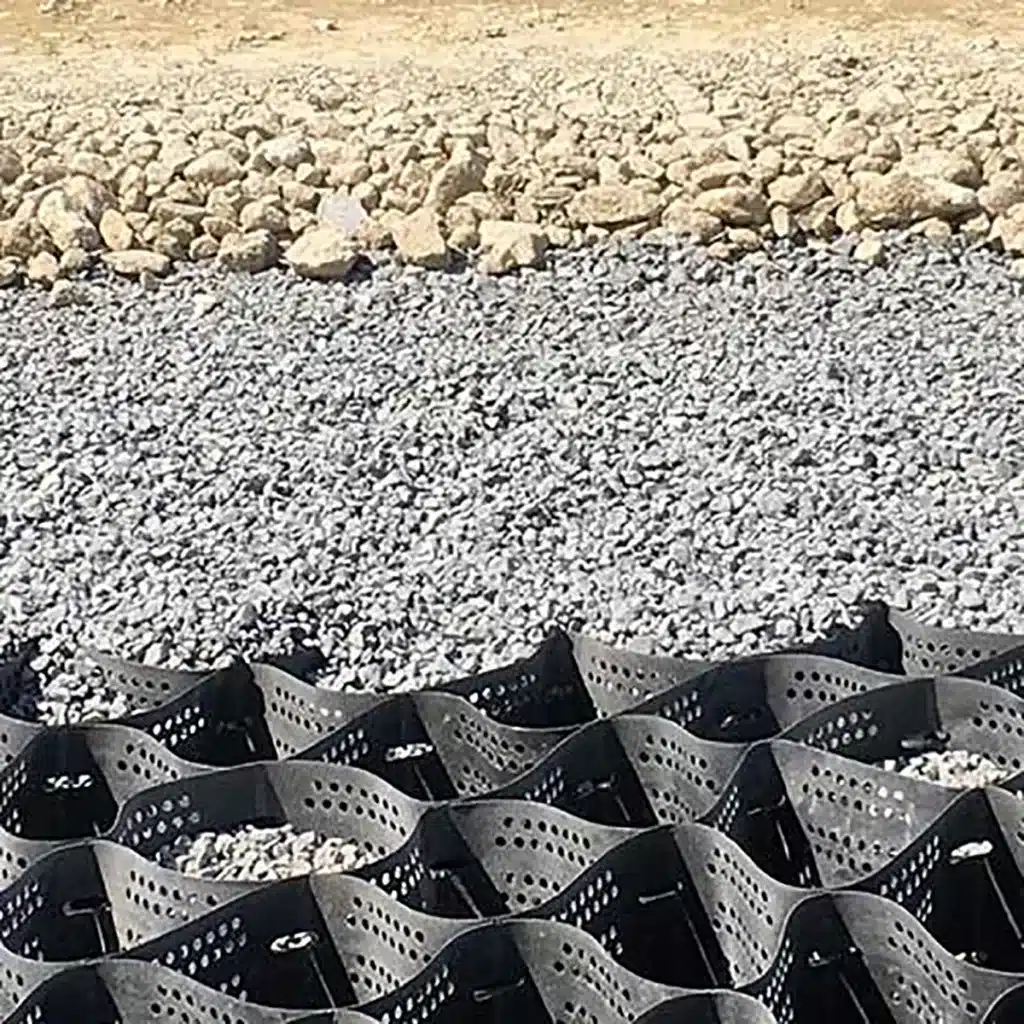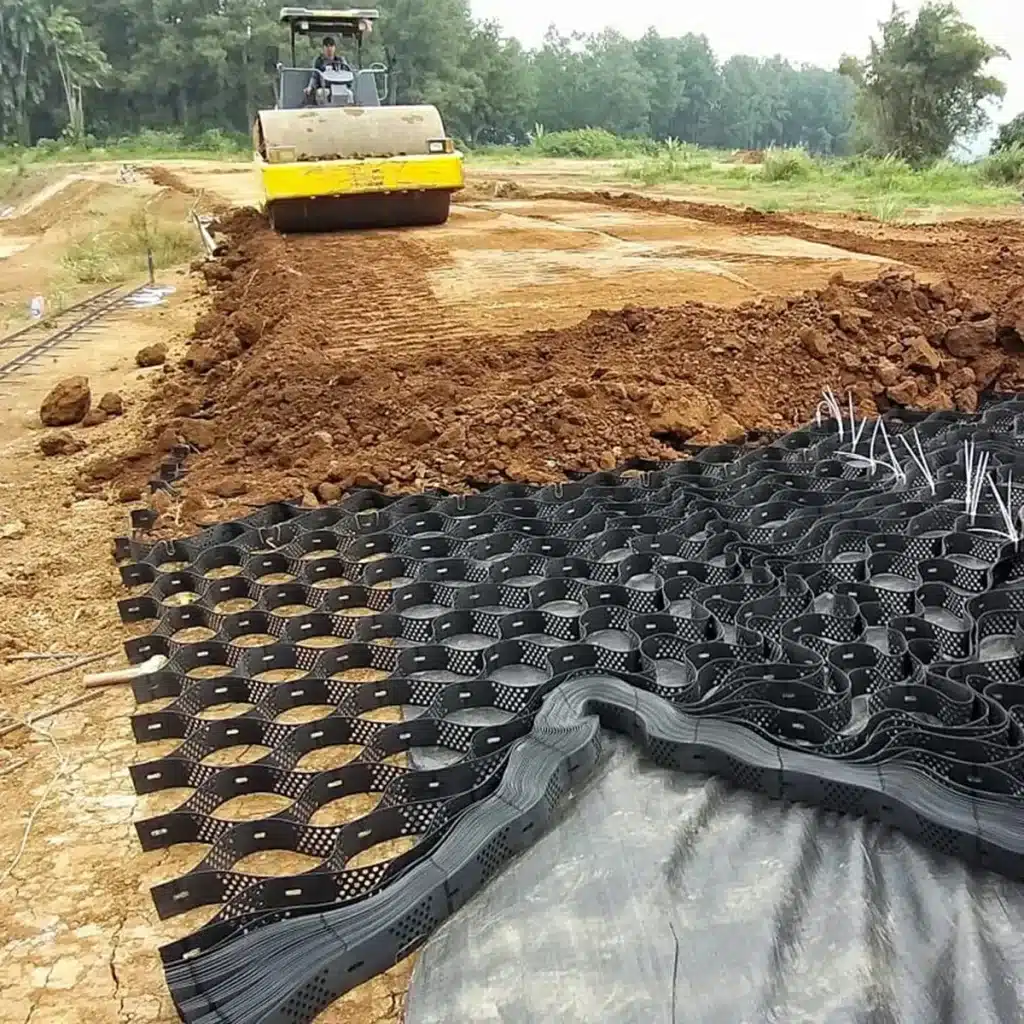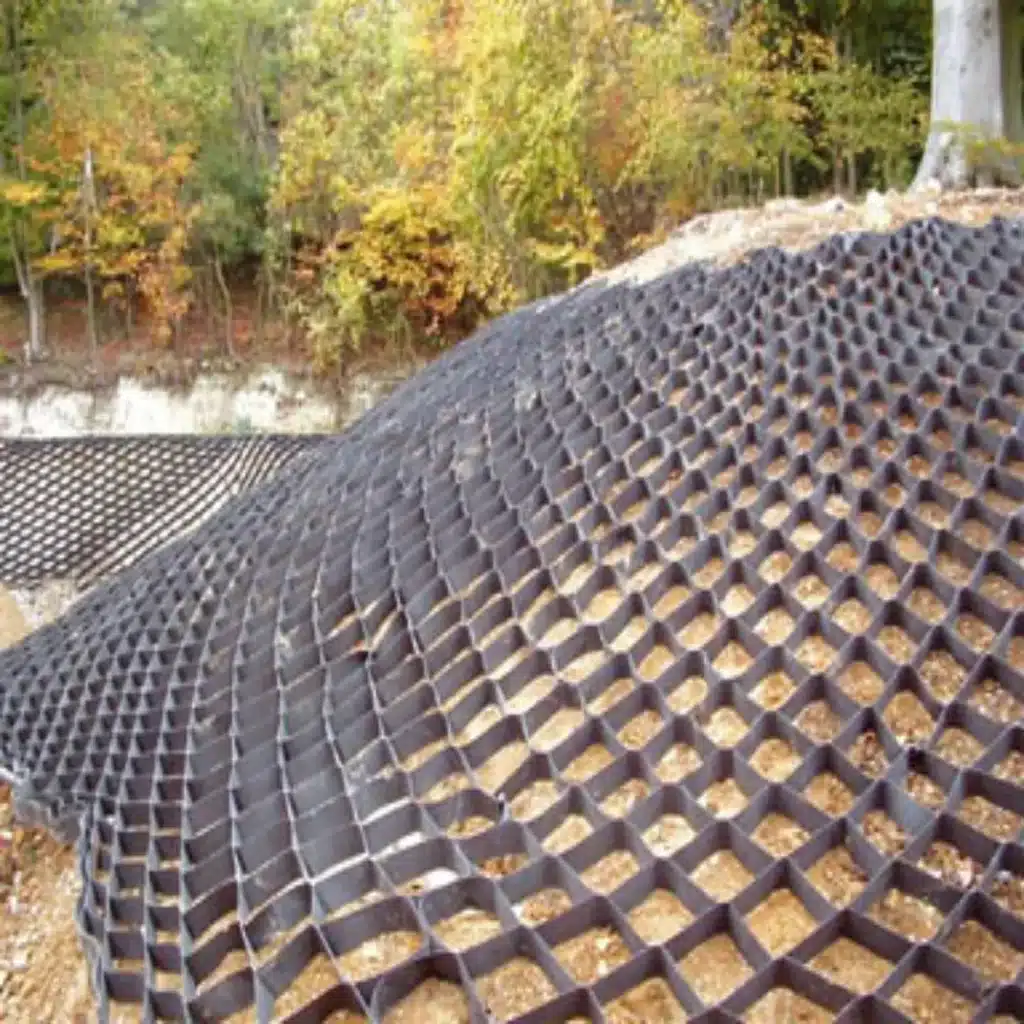+86-159 9860 6917
info@geofantex.com
geofantex@gmail.com
+86-400-8266163-44899
In the quest for sustainable construction and land management solutions, geocell ground stabilization emerges as a groundbreaking technique. This innovative approach not only enhances soil stability but also champions environmental conservation, making it a favored choice among engineers and environmentalists alike. Geocell technology, with its unique cellular confinement system, transforms weak soils into robust structures capable of supporting various applications, from roads and railways to retaining walls and erosion control projects. This article delves into the core of geocell ground stabilization, unfolding its principles, benefits, applications, and prospects.

What is Geocell Ground Stabilization, and How Does It Work?
Geocell Ground Stabilization: Short Summary
- Applications: They are used in road construction, erosion control, slope stabilization, and landfill management due to their cost-effectiveness and environmental benefits.
- Definition: Geocells are three-dimensional, honeycomb-like structures used to stabilize and reinforce soil, improving its load-bearing capacity and preventing erosion.
- How It Works: The geocells confine soil within their cells, increasing shear strength, reducing lateral movement, and enhancing stability.
What Are the Key Benefits of Using Geocell Technology?
Geocell technology offers several key benefits:
- Durability: Geocells are resistant to UV radiation, corrosion, and harsh weather conditions.
- Enhanced Soil Stability: By confining soil, geocells prevent erosion and improve slope stability.
- Cost-Effective: They reduce the need for expensive materials like concrete or gravel.
- Versatility: Suitable for a wide range of applications, including road construction, erosion control, and landscaping.
- Environmental Benefits: They promote water drainage and minimize environmental disruption.

Where Can Geocell Ground Stabilization Be Applied?
Geocell technology boasts a versatile range of applications. It is extensively used in the construction of roads, railways, and parking lots, especially in areas with poor soil conditions. Slope protection and landscaping are other critical applications, where geocells prevent soil erosion and promote vegetation growth. Additionally, they are employed in retaining walls, channel protection, and embankments to enhance stability and prevent soil loss. Their adaptability also extends to military and emergency applications, providing quick and reliable ground stabilization solutions in challenging environments.
What is the Future of Geocell Technology in Ground Stabilization?
The future of geocell technology is bright, with continuous advancements aimed at enhancing its efficiency, sustainability, and scope of application. Research is underway to develop biodegradable and more environmentally friendly materials for geocell production. Innovations in design and integration with other geosynthetic materials are expected to improve performance and cost-effectiveness. Furthermore, the growing emphasis on sustainable construction practices worldwide is likely to increase the adoption of geocell systems, making them a cornerstone in the evolution of ground stabilization techniques.
Geocell ground stabilization stands as a testament to the remarkable advancements in construction and environmental management technologies. Its ability to transform weak soils into sturdy and reliable foundations has revolutionized the approach to infrastructure development, offering sustainable, efficient, and versatile solutions. As we look toward a future where stability and sustainability go hand in hand, geocell technology promises to play a pivotal role in shaping the landscapes of tomorrow.



Get Free Sample
We’ll respond as soon as possible(within 12 hours)






















